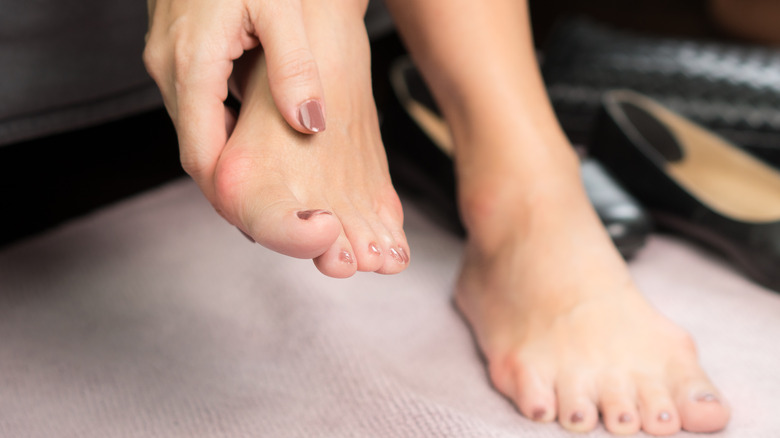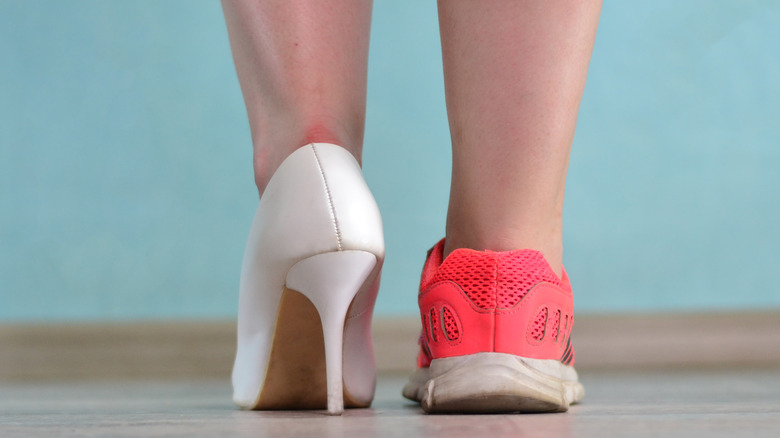This Is What Really Causes Blisters On Your Feet
Whether it's stylish heels, chunky boots, or summertime sandals, the excitement we feel over a new pair of shoes is often immediately followed by the dread of having to break them in. This transitional period of discomfort can include pinching, tightness, or the worst offender of them all — blisters. What exactly is a blister and what causes them to form in the first place?
According to the Family Foot & Ankle Center of South Jersey, blisters emerge on our feet as a result of repeated rubbing on one area, which then exposes the raw skin underneath. The progression of a blister begins when the external layer of the skin begins to deteriorate. The body then creates a protective barrier over the affected area by producing a small fluid-filled bubble. In doing so, this reduces the risk for infection. In the event that the blister does become infected, the blister may instead be filled with blood or pus, rather than the translucent fluid we often see.
Blisters can be painful enough on their own, and several may develop in the same area. However, shoes are not the only potential cause of blisters. Here are some of the other unique causes.
Which shoes are most likely to cause blisters?
Blisters can develop for reasons completely unrelated to shoes. For example, some people may develop foot blisters as a result of a bacterial or fungal infection, frostbite, herpes, or health conditions such as eczema, allergies, or chickenpox (via Healthline). Environmental factors may also contribute to the formation of blisters, such as excessive sweating or particularly sunny days that cause blisters related to sunburn.
When caring for a blister, it's important to leave the area untouched. Popping a blister can leave the area susceptible to infection (via Family Foot & Ankle Center of South Jersey). Sometimes, a blister may pop on its own. Should this happen, be sure to cleanse the area with warm water and soap, and cover the exposed skin with a bandage afterward. To reduce the chances of developing blisters, experts suggest wearing socks and shoes that are comfortable, well-fitted, and breathable. In the event that your blister begins to change in color or becomes increasingly painful, be sure to consult with a physician or podiatrist.
If the blisters on your feet are unrelated to a health condition, Westchester Health identifies which types of shoes are most likely to cause blisters and should therefore be avoided. The top culprits are high heels and any shoe with a pointed toe. Unfortunately, the added pressure and rigid straps of these types of shoes provide a prime setup for a dreaded blister.


